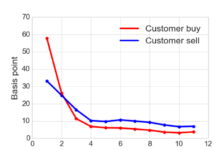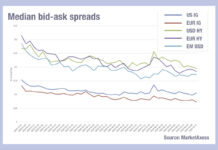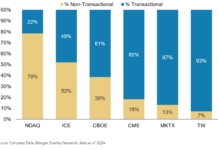As fixed income market participants eye the threat of a further back-up in yields, liquidity sourcing is being reassessed.
While technology has greatly advanced the capabilities of the trading desk, when bond prices swoon, the old-fashioned method of picking up the phone still reigns supreme.

“When the market is dropping like a knife, it’s about the skill set of a seasoned trader who has relationships and knows how to access liquidity,” said Lindsey Spink, Co-Head Global Fixed Income Trading at American Century Investments. “As soon as volatility spikes it comes back to old-school relationships and trust.”
The placid market of 2021 was highly conducive to low-touch trading and may have lulled traders into a sense of complacency that the market structure evolved more than it did.

But as such a market was not the norm, traders “need to make sure their tool kit is robust enough, with plans B, C and D” for sourcing liquidity, said Steve Laipply, Head of U.S. iShares Fixed Income ETFs at BlackRock.
Fixed income trading platform operators such as Tradeweb and MarketAxess continue to expand their offerings, with the aim of enabling traders to access liquidity as they need to.

“We don’t look at it as ‘how does the market change?’, we look at it as ‘how are you utilizing technology to navigate the particular environment that you’re in? What protocols are you using?’,” said Iseult Conlin, Managing Director, U.S. Cash Credit, Tradeweb.

MarketAxess is focused on driving efficiencies for clients via more standardized and precise data products, improved data management tools, and more integrated trading protocols, said Kat Sweeney, Head of Index and ETF Solutions at the firm.

Bill Wright, Director of Credit, Bank Loans & Derivatives Trading at Loomis Sayles, said a structural issue is that the size of the credit market has about doubled over the past 10 years, while dealer balance sheets have shrunk by half. Hence, buy-side traders have a greater challenge in determining how to implement a trade, whether “down the middle of the fairway” such as with an ETF, or in a more complex but ideally more efficient way.
Loomis, Sayles traders have been trying to better determine depth of book – a metric often used in equity trading – for a fixed income security. They’re also venturing into “portfolio trading 2.0,” for which Wright said the fundamental question is “What is the ultimate goal of this trade other than just pure execution?”
Spink of American Century noted that traders and portfolio managers were closely aligned 15 years ago, but they grew a bit apart in the ensuing years amid the rise of electronic trading and focus on cost cuts. But more recently, “the pendulum is swinging back a little toward how traders add value from an informational perspective,” he said.
©Markets Media Europe, 2022
TOP OF PAGE

























